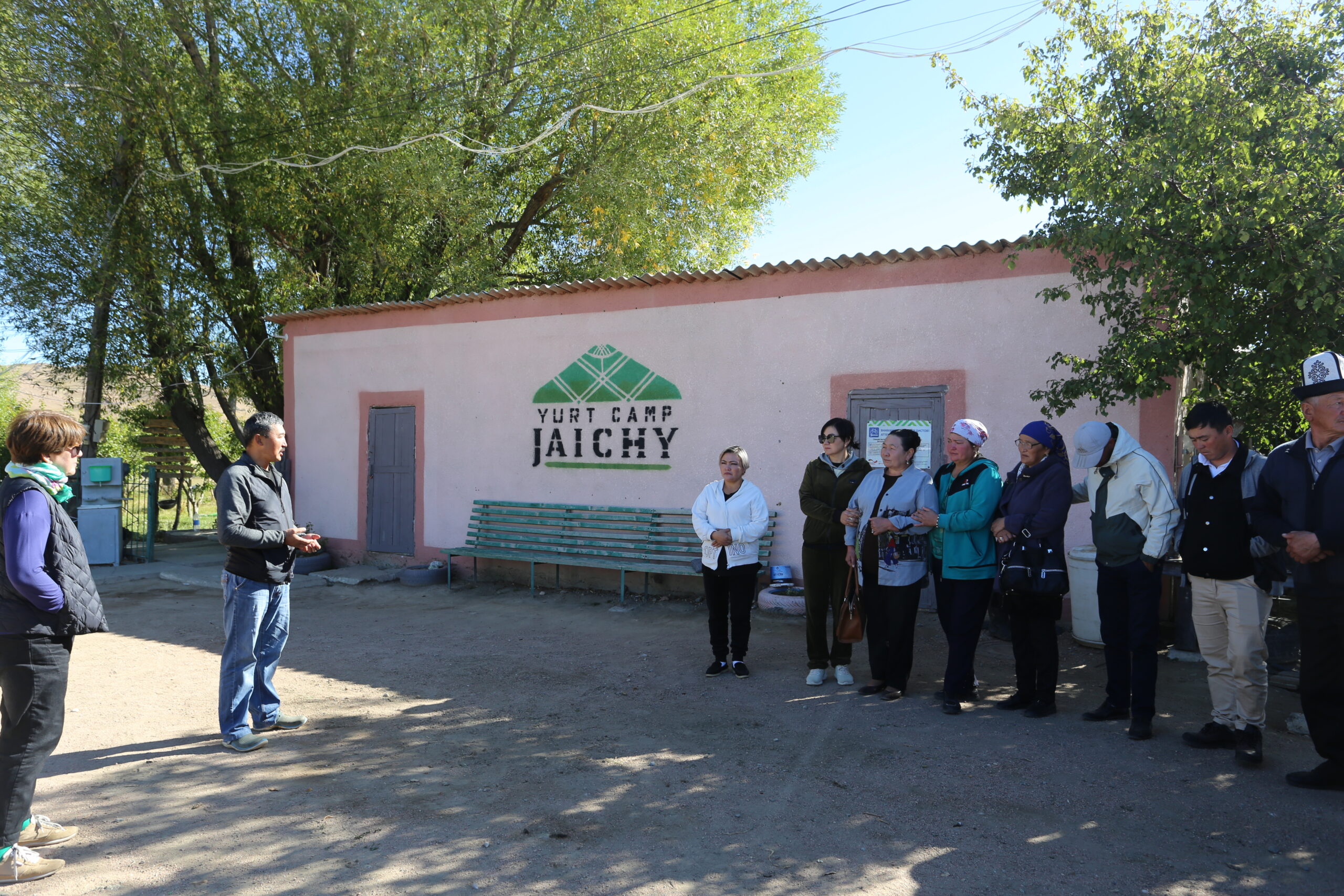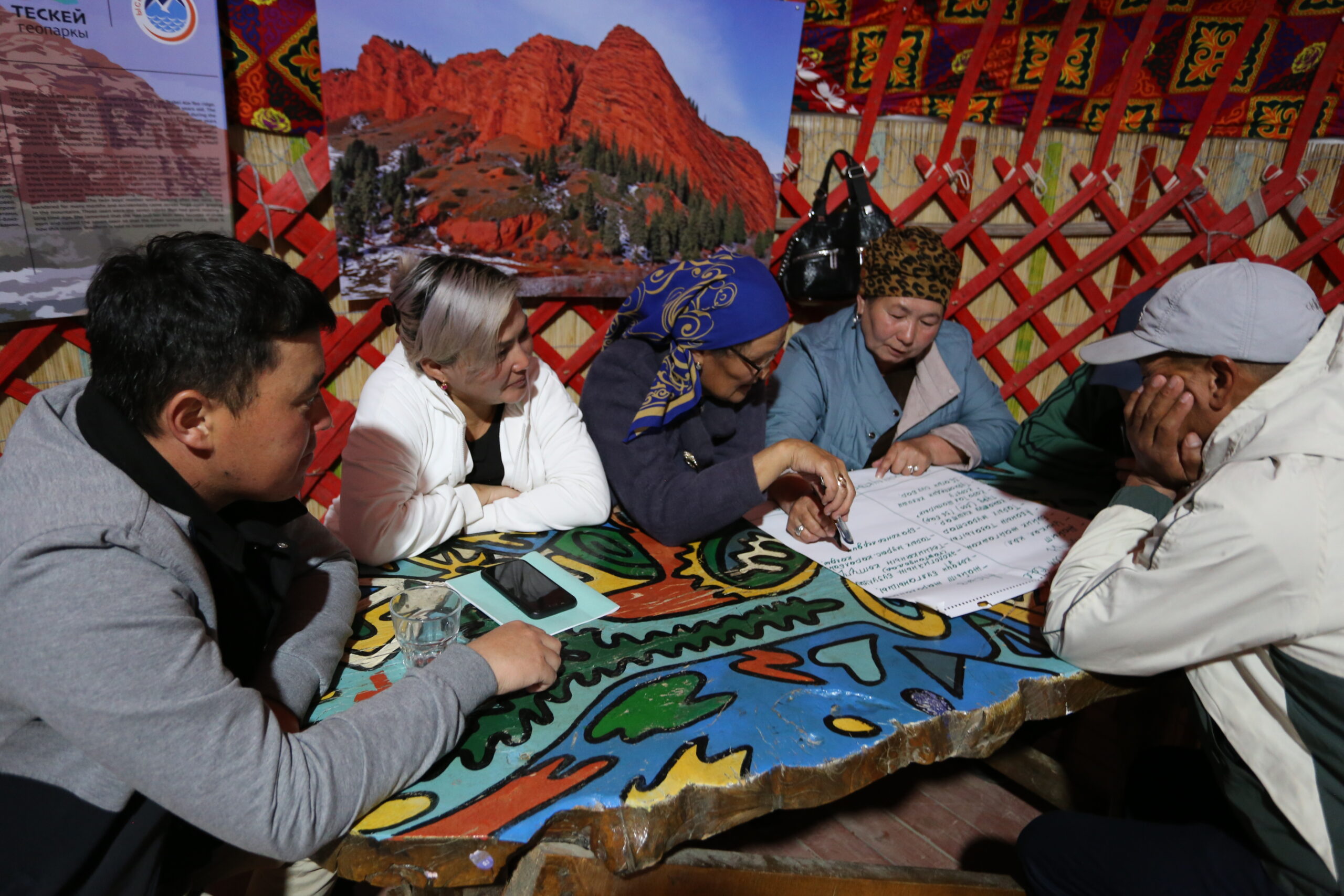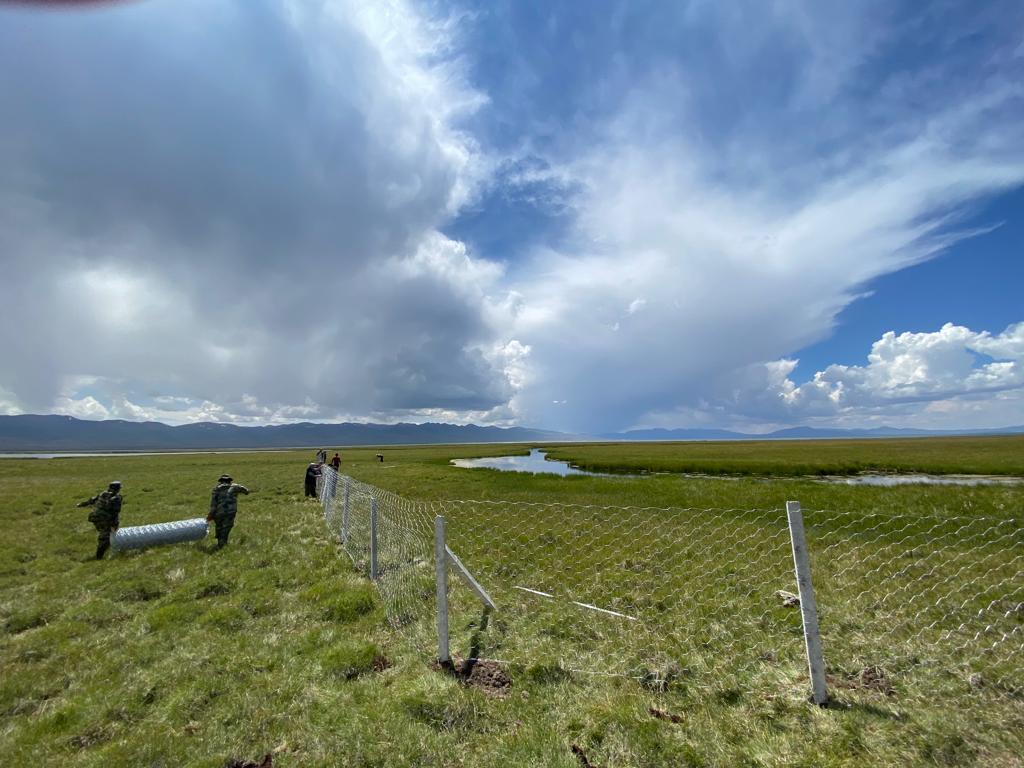Centralasiengrupperna works with the Institute for Sustainable Development Strategy (ISDS), our partner organization in Kyrgyzstan, to protect and restore the biodiversity and encourage sustainable livelihoods in Son-Kul lake in the Kyrgyz mountains. Within this collaboration, we aim to empower local communities, with a focus on women and youth, to exercise their rights for a healthy environment and participate in decision-making processes.
This blog post is the second part of our series dedicated to the key activities within our collaboration during 2023. Read the first part for a more comprehensive insight into our partnership.
‘Son-Kul birds: Protect the Mountain Goose’ Festival was organized to engage the local community and young people in the preservation of Lake Son-Kul’s ecosystem and to raise awareness about the challenges faced by migratory bird habitats. Additionally, it aimed to foster a greater sense of environmental responsibility among the local residents, as the disappearance of specific migratory bird species presents a significant threat to biodiversity, spanning from the local to the national and global levels.

Lake Son-Kul is crucial for local communities as livestock farming is their main income source. However, uncontrolled livestock growth and intense grazing are degrading the pastures, spreading diseases, and threatening the local wildlife.
‘The Mountain Goose has not nested in the Lake Son-Kul area since 2005. The reasons for its disappearance include the destruction of nesting sites, specifically islands that have been trampled and damaged by large livestock. Clutches of eggs have been collected by shepherds and fishermen, and birds have become trapped and perished in fishing nets,’ explains Anatoliy Ostashenko, an ornithologist affiliated with the National Academy of Sciences of the Kyrgyz Republic. He further notes, ‘Animals, including mammals and birds, are among the first to respond to ongoing ecological changes, such as climate shifts, alterations in vegetation composition, increased disturbance factors, and a reduced food supply’.
The event brought together over 150 activists, school students, pasture users, local government bodies, experts, ornithologists, media, and civil society representatives from the Sary-Bulak, Cholpon, and Kochkor regions of the Kochkor district. More than 40 tourists on the way back from Son Kul Lake also took part at the festival. The program featured a range of engaging activities, including a theatrical performance, a flashmob, a children’s art exhibition, an eco-quiz for local school children, awarding traditional ecological knowledge and practices, and a concert program.
During the summer, ISDS organized the fencing of a 500-metre-long section of the Son-Kul wetlands in the Batai-Aral and Ak-Tash-Kyzyl areas. In this area, there is a large concentration of waterfowl nests during spring and summer, in particular, the genus of grebes. Human and domestic animal activities in this region often disrupt these nesting birds, resulting in higher rates of egg and chick mortality. By erecting the fences, the aim is to mitigate disturbances and, in turn, improve the overall well-being of the nesting bird populations.

On September 25-26, ISDS arranged an exchange tour where 16 representatives from the target municipalities of Kochkor district visited Ton district in Issyk-Kul region. Among the tour participants were heads of villages, deputies of the local councils, including women’s councils, of Kochkor, Sary-Bulak, and Cholpon aiyl aimaks/rural municipalities. The main purpose of the exchange tour was to facilitate knowledge-sharing and the exchange of best practices related to environmental and social activism, involvement of local communities in decision-making, and sustainable natural resource management through peer-to-peer learning.

The participants learned about the ‘Ak Bulun Eco’ organization’s experience in creating a community micro-reserve, its engagement in environmental activism, and efforts to involve youth and local self-government representatives in the reserve’s management. Participants also learned about the ‘Southern Shore of Issyk-Kul Lake’ eco-ethno tourist destination and its efforts in establishing the Teskey Geopark and its inclusion into the UNESCO Global Geoparks network. The initiative aims at preserving Lake Issyk-Kul’s heritage and promoting sustainable regional development.
The tour ended with a visit to Jaichi ethno-camp in Kok-Sai. Participants became acquainted with the camp’s approach to developing eco-ethno-tourism, explored the local ethnographic museum, learned about the community’s efforts in combating poachers, the operations of the ‘Baybosun’ community micro-reserve, and the annual agrotourism festival.
As one of the exchange tour participants, Cholpon Sydykova, a deputy of the local kenesh of the Cholpon aimak, remarked: ‘We are very impressed by the work of local activists on the protection and sustainable use of natural resources; it turns out that in addition to livestock farming, there are many other opportunities for the development of the region and area, for example, development of ecotourism, gardening. There are many natural and sacred places for the development of sacred or ethno-tourism.’
As another participant of the exchange tour noted,
‘Thanks to the exchange tour, we learned more about community initiatives in the Issyk-Kul region to preserve natural ecosystems, biodiversity, and natural and cultural heritage.
We also gained insights into the specifics of jointly managing unique natural areas, including both achievements and key challenges. It was interesting not only to meet the leaders of the pilot initiatives in the Ton district but also to have a chance to learn from participants from the target municipalities of our joint project during the two-day tour.’

From October 11 to 13, a series of Gender Action Learning System (GALS) training sessions was organized, focusing on the ‘Income Increasing Tree’ tool for three pilot municipalities in Kochkor, Naryn. Participants also engaged in discussions addressing gender stereotypes and attitudes prevalent within their communities, particularly in the context of income-generating activities and the use of natural resources. During the training, participants worked on developing business plans using the income tree analysis, and received training on how to use this technique to optimize the profitability of family businesses as an alternative to traditional livestock farming practices.
Members of 60 local households have enhanced their skills in income-generating activities by mastering the basics of business planning. Out of three submitted projects, two were selected to support activities such as horticulture and poultry farming. These activities serve as alternatives to reduce the pressure on pastures by transitioning from animal husbandry to other types of livelihoods. They exemplify the development of businesses that do not harm the biodiversity and ecosystem of Son-Kul Lake. Supporting these initiatives is crucial for changing the mindset and behavior of local community members, who have been engaged in traditional animal husbandry for decades.

Joint mapping and monitoring of pasturelands and biodiversity of pilot areas and their impact on biodiversity and wetlands of Son Kul Lake was conducted with close collaboration with Natalya Kilyazova, an expert of the National Research Institute of Animal Husbandry and Pastures of Kyrgyzstan. Three monitoring visits were carried out by the expert, in cooperation with representatives from Pasture Users Unions of the pilot municipalities. The ‘cross line’ method was used to quickly and accurately determine the percentage of soil covered by plants and the proportion of vegetation cover of grazed plants in a pasture, in comparison to weeds and non-grazed plants. Thanks to their participation in the joint mapping and monitoring of grasslands in the pilot Son-Kul area, representatives of the pasture users unions from targeted municipalities have significantly enhanced their capacity and experience in conducting assessments of grasslands using both traditional and modern methods.

To summarise the results of this year’s project in target villages, on December 13, a round table was conducted in Kochkor village. This event provided an opportunity to discuss future cooperation and the involvement of local community members, particularly women and youth, in decision-making processes to strengthen their participation in sustainable management of the Son-Kul area. The round table gathered representatives from the Kochkor district administration, five rural municipalities, including pilot municipalities, Karatal-Zhapyryk nature reserve, as well as experts, local leaders, eco-activists, and deputies of local keneshes from the pilot self-governments.

Tursunbek Baktygulov, first deputy Akim of the Kochkor district administration, noted the project’s achievements, especially improving the capacity of local communities and strengthening their role in solving environmental issues related to protecting Son-Kul Lake. He also mentioned that they had received a letter from the ‘Save Son-Kul’ group of local environmental activists, addressing the issues of pastures and roads in the Son-Kul Lake pilot area. Currently, they are preparing an appeal to the Naryn regional administration, aiming to collaboratively solve these problems.
Almaz Satybekov, the new director of the Karatal-Zhapyryk State Nature Reserve, reported on the collaborative efforts with the ISDS team on protecting the wetlands of Son-Kul Lake and active engagement with local communities. He noted some positive trends in the Batay-Aral territory, which was fenced as part of the project. For example, in this area, there is now a large concentration of waterfowl and plants that have begun to grow well. This is due to the significant reduction in disturbance factors and pressure from domestic animals, thanks to the fencing of protected areas. He also mentioned that the state reserve staff is actively working with villagers from pilot communities by conducting joint events, such as trainings and festivals. In addition, thanks to the project, two informational stands in three languages (Kyrgyz, Russian, and English) will be set up in spring. Informational brochures about the Ramsar sites of the Karatal-Zhapyryk Nature Reserve have also been developed and distributed among local residents and tourists.
Stay updated about Centralasiengrupperna’s work by following our social media:
- CAG’s Instagram page: https://www.instagram.com/centralasiengrupperna/
- CAG’s Facebook page: https://www.facebook.com/Centralasiengrupperna
You can learn about how you can become our member here!
To find out more about ISDS, follow the links below:
- Website: http://www.isds.kg/index.php/en/
- Instagram: http://www.instagram.com/isdsfund/

